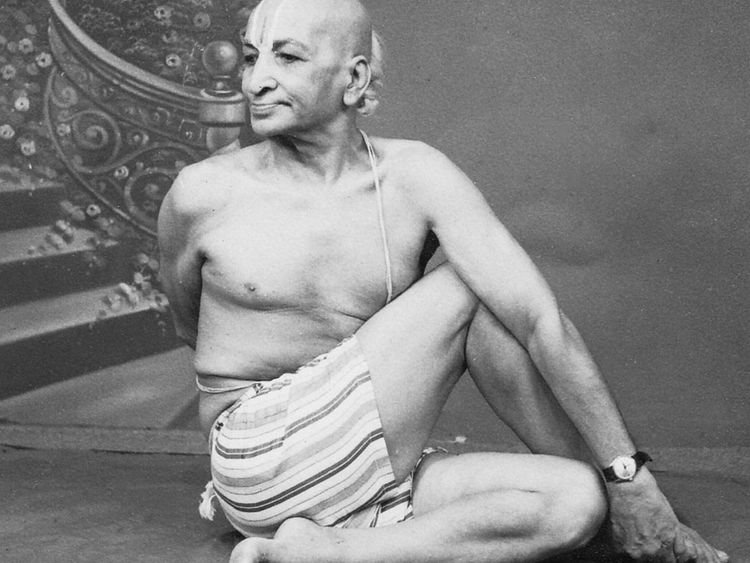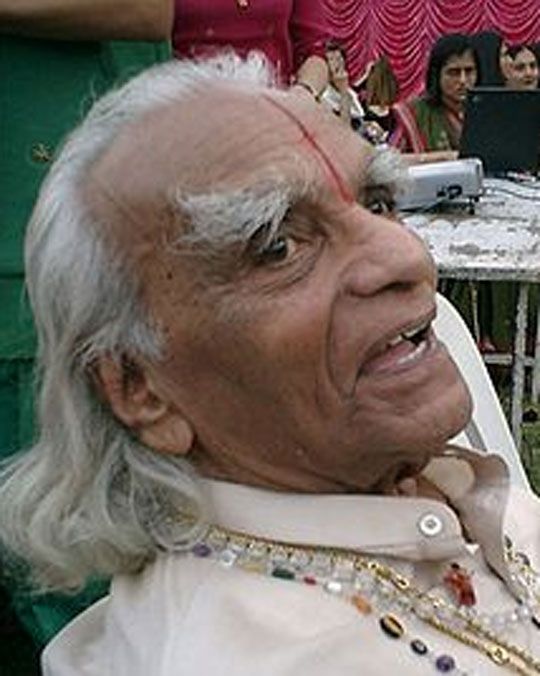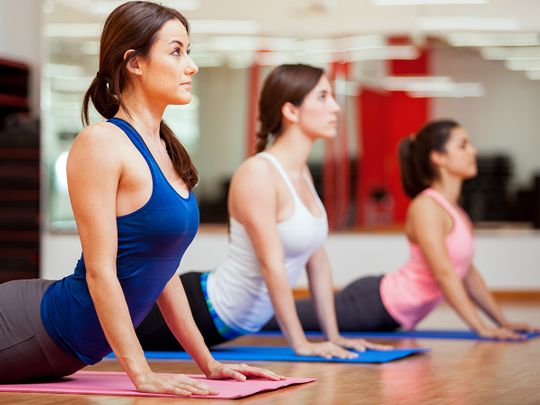
June 21 is International Yoga Day. A day when the world celebrates a fitness form that has captured the imagination of people. Yoga, which originated in India, now has numerous variations and styles with large followings.
Women clad in bright leotards and men in sports gear sweat out in fitness studios forking out large amounts in fees. Yoga, they say, helps them keep in shape. Some say the postures help them shed weight. Some say it has helped them achieve mental peace. What’s clear from all these is that yoga has taken the world by storm.
Yoga practised today is a far cry from the Patanjali Yoga Sutra, which dates back to 250 BCE and is one of the six orthodox philosophies of Hinduism (Nyaya, Sankhya, Vaisheshika, Purva Mimamsa and Uttara Mimamsa or Vedanta are the others). Tirumalai Krishnamacharya (one of the earliest proponents of yoga) travelled around India to popularise yoga, his disciple B.K.S. Iyenger was instrumental in bringing it to the West. Paramahansa Yogananda, Bikram Chowdhury and other yoga gurus too endeared to Americans as yoga travelled the world as a fitness form.
Celebrities, who grappled with fame and fortune, found yoga as a route to relieve stress. K Pattabhi Jois’ Ashtanga Yoga attracted Madonna, Sting and Gwyneth Paltrow, while Maharishi Mahesh Yogi’s transcendental meditation found a following in Beatles.
Yoga studios today are found in almost every city. The practitioners are called yogis these days, although yogis of old are required to have reached a higher level of consciousness. That tells us yoga now is a fitness routine. It has shed its spiritual trappings along the way.
Most people say yoga has helped them beat stress and improve their health. UAE-based yoga practitioners have had varied experiences. Here’s what they say.
Yoga taught me to cope with my mum’s cancer fight
Sonal Tiwari, Assistant Features Editor - Food
Waking up at 6am was not my cup of tea. But I watched my mother wake up at 4am every morning to practise yoga. This was in 1997. But now, things have changed. I wake up at 6am.
My first experience with yoga was when I was 8 years-old. We had a yoga teacher come home to teach my mother, who was only starting her yoga journey. Little did she know yoga would be life transforming or even saving for her?
I was an athlete back in school and yoga always intrigued me, also because I watched my mother practise, so closely. The first asana (an asana is a body posture, originally and still a general term for a sitting meditation pose) my Mum taught me was vrikshasana or the tree pose. I loved doing it. Reason, it required me to balance on one leg, which required immense focus.
From then on, I would try to sneak into my mother’s yoga session and ask her to help me try new asanas. And just like that, I started practising yoga on and off. I moved to Mumbai for work and every long distance phone call with Mum was accompanied by a soft reminder to practise yoga, especially because I had started gaining weight.
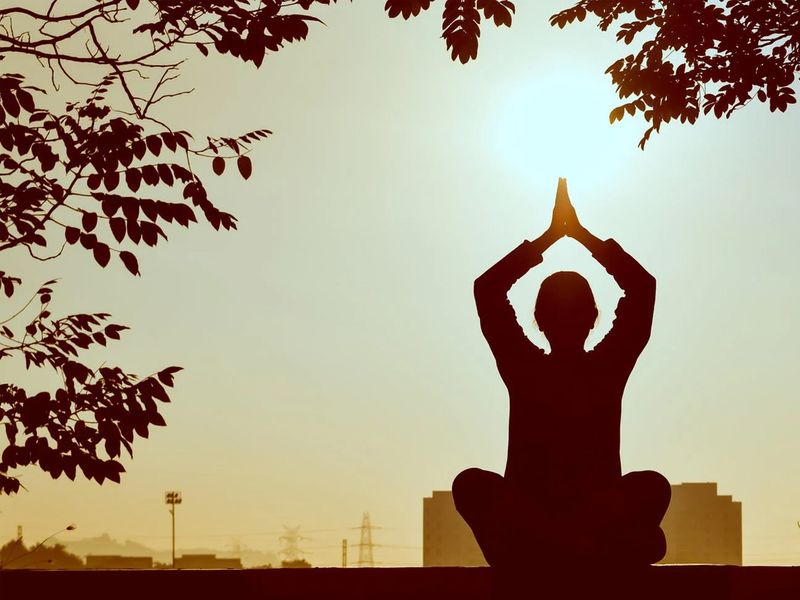
I joined a rather expensive Ashtanga yoga class, but was pretty soon intimidated by the celebrities who were part of the students. And within a month gave up and decided to practise on my own, which, of course, didn’t happen though. I would practise the few asanas mum taught me, that’s about it.
It was in the year 2017 when I went to pursue my masters abroad that I witnessed the true popularity of yoga, first hand. And decided to catch-up on my practice.
Moving back to India in 2019, I continued learning from mum until right before the pandemic. In February 2020, my mother was diagnosed with breast cancer. Our world was about to change. It was detected at the right time, and within a week she was operated upon and within 21 days started with chemotherapy. It was scary.
We did not know what would happen, but we knew it was a fight, a bigger one for mum. The doctors were happy she was a yoga practitioner.
One and a half years later I am a certified yoga trainer. There are good and bad days, some hectic and others more tiring but seeing my mum fight, I’ve learnt to keep going, just like yoga.
Yoga helped shed 25kg and calm me: Tweenypher Maddela-Hilotin
After I delivered our third child in 2013 in Dubai, I started putting on the pounds. Our lifestyle and my job (which I rejoined 45 days after delivering our baby Toff) pushed me to take comfort in food. This was when panic attacks/anxiety disorder started to creep in. Juggling motherhood and shifting work hours made life doubly exhausting. Spending time with my new baby became a luxury.
After a long, stressful day at work, followed by a full house with children running around, attending to their school needs, and leaving a mess in their path, it took a toll on my physical and emotional state. Moreover, the lack of sleep made my days miserable.
Back in 2016, I was desperate for a solution to my weight problem. I was tipping the scales at more than 86kg. Unfortunately, I didn’t have the energy to go back to my pre-pregnancy weight of 56kg.
What did I do? First, I quit my job of nine years. We decided living is not about money or the Facebook definition of “good life” alone. Then, I started yoga and chose healthier food, which meant devotion to vegetables — raw bitter gourd (karela), okra (soaked overnight), moringa, sweet potato leaves (tops), apple cider vinegar alternately with lemon juice, brown rice, fish, hot water all the time— and less red meat.
As for yoga, I did a starter’s regimen. YouTube tutorials were helpful. By this time, I had to fight back exhaustion, perhaps the effect of popping panic attack pills.
First, I did stretching — simple head, neck and shoulder, limb exercises — during the daily one-hour sessions. Keeping at it is no walk in the park.
It became easier in the following week. Then, I chunked up my yoga sessions to 30 minutes thrice a day — midday, mid-afternoon and early evening. I did a few minutes of boxing with my two older sons and 30-minute walks in the mornings, too. My day wouldn’t feel right if I skipped these. Then I did a bit of advanced yoga.
Was it physically taxing? It didn’t feel that way, as it was the only suitable regimen, given my condition. Did it work? It sure did. After nine months, I shed up to 25kg, though weight loss was not the end in itself. One payoff was boosting my health and self-image. Life is never easy. Nothing is. But when mind and body cooperate, the feeling of well-being is immeasurable.
— As told to Jay Hilotin, Senior Assistant Editor
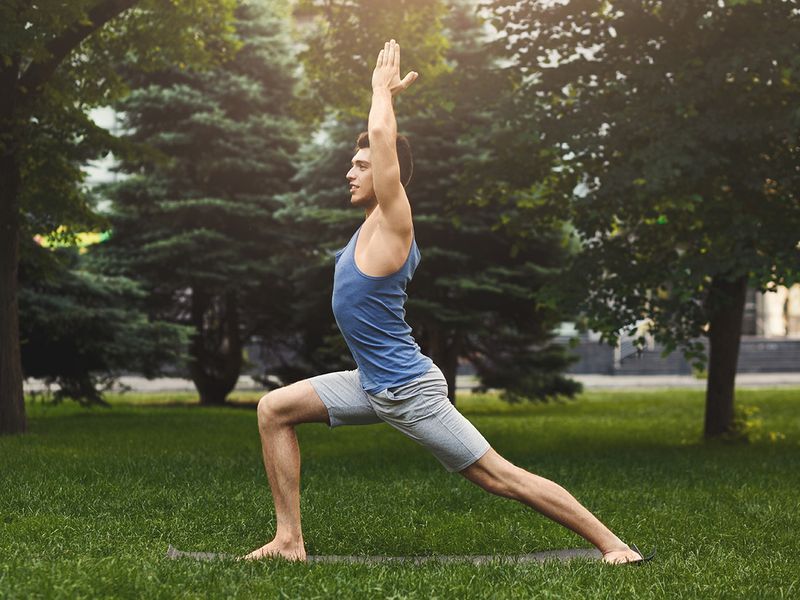
How yoga messed up my back: Akhil Hassan
I’ve had intermittent back problems for most of my life; losing weight and staying fit had fended off much pain over the years, and so when I started to notice a growing tummy, I decided to do something about it.
I have a sciatica problem; this involves a nerve ache that can extend all the way from the lower back down the buttocks and all the way into the base of the foot. Sometimes, I find I walk lopsided. After seeing my family members benefiting from some demanding yoga classes a few years ago, I decided to take part in it too, after, of course, reiterating over — and over — that the issue exists.
For a while, the bending and pushing helped. The stretches eased the pain and untied the knots; sleeping became easier, balance became easier. Then came that fateful day. I was bending, trying to get my arms to reach my toes, and my yoga teacher pushed, pushed, pushed. Crunch. The sound was muffled only by my cry of pain, and I lay down, unable to move.
That week I limped and sat gingerly on cushions, tears stinging my eyes. Each sneeze and cough stabbed at my back, and even sleep couldn’t dull the sensation. The hurt would ebb and wane and rush back in inopportune moments. The pain became unbearable. Months of physiotherapy later, I found out that I actually had a slipped disc.
Yoga may work wonders for some — but know your limits and make sure the instructor too knows it, for there is no going back.
— As told to Karishma H. Nandkeolyar, Assistant Online Editor
Yoga helped me survive the toughest phase of my life: Zahi Saba Ayon
I am a Lebanese musician and fitness trainer who has been living in Dubai since 2013. My childhood was very peaceful, but when I turned 16, I started questioning my existence, purpose in life, my studies, my duties, and my friendships. I began thinking about all those duties that were imposed on me. Those questions and concerns created a storm in my head. And I resorted to taking painkillers and put myself in harm’s way.
During this dark phase, one of my friends — who manages an NGO in Lebanon and conducts camps on theatre, music, drama, breathing, and yoga — nudged me to try one of his camps. I picked music therapy as it was my passion. I had a conversation with the breathing mentor Philippe Guadrat who allowed me to participate even though his class was full. That was the beginning of change.
Gaudrat represented an organisation called The Art of Living, founded by Sri Sri Ravi Shankar, who created a breathing technique called Sudarshan Kriya’
When I tried it, something deep inside was stirred. The storm inside me began to settle, and there was less internal resistance. My body automatically began to reject all that the stuff which I used to take daily. Doing yoga was like cleansing myself from all that toxins. I learned how to breathe.
After fighting off the addiction I had at the time, I started teaching this breathing technique, in addition to yoga and meditation, which had an enormous effect on my body and mind. I also visited rehabilitation centres in Lebanon, met kids who reminded me of my depression, helped them breathe and let go of the negative emotions and internal conflicts.
Those encounters reminded me that small things that we do in our daily lives might contribute to someone’s happiness and peace of mind. Yoga helped me survive the toughest phase of my life.
— As told to Manjusha Radhakrishnan, Assistant Editor – Features
Yoga taught me how to be happy: Gokul Ram
A yogi once said that yoga is a light that will never dim once it is lit. And I have experienced it. From the day I was introduced to yoga, I have experienced several changes in me. Apart from transforming my body to a new level of fitness, I became stronger emotionally and mentally.
At first, I was hesitant to practise yoga, as it was considered slow and not so exciting. But the moment I began to practise in earnest, I realised that all the moves were unlike any other physical exercise I was familiar with. I started losing inches, and I became more flexible through all those complex yoga postures.
Yoga doesn’t just make your body fit but also rejuvenates your organs and internal systems. My hormones became balanced, and I felt a deep sense of happiness. Yoga taught me how to be happy, and now I run yoga classes in my centre (Trance Yoga, Dubai) to remind everyone in the UAE about the greatness of yoga.
— As told to Manjusha Radhakrishnan, Assistant Editor – Features

What’s yoga?
It’s an exercise form that uses body postures (asanas), breath control and meditation to improve health and relaxation. The author of the classical yoga text, Sage Patanjali, defined yoga as “the stilling of the movement of thought in the mind” to “know the true self”.
Unlike other forms of exercise, which work only physically, yoga is also a mental and spiritual practice. At least that was how it used to be. But, unfortunately, some of those values were eroded in the push for popularity.
Yoga means union — a union between mind, body and spirit. The word yoga derives from the Sanskrit root yuj, meaning “to yoke,” or “to unite”.
What are the origins?
Although there are no records on the origins of yoga, the practice is believed to date back to pre-Vedic Indian traditions in the Indus valley civilisation around 3000 BCE. There are references to yoga in the Hindu scriptures of Rigveda and the Upanishads. Sage Patanjali codified yoga around 250 BCE, but it reached the West only in the 20th century.
What are the different styles of yoga?
Yoga has transformed into different forms. Each guru or instructor has brought new insights into the classical form, and their interpretations have given rise to newer styles. After yoga went global, more styles proliferated to suit the growing legion of practitioners.
Some of the mainstream yoga styles are:
Kundalini yoga: The style stresses the spiritual and physical aspects. Its essence is about releasing the kundalini energy in your body, which is said to reside in the lower spine.
Iyengar yoga: Developed by BKS Iyengar, it focuses on precise movements and postures, besides breathing control.
Ashtanga yoga: Pattabhi Jois popularised this vigorous style similar to Iyengar yoga but different in approach. Each pose is held for only five breaths and could be followed by a half sun salutation.
Vinyasa yoga: It mainly stems from Ashtanga yoga but also includes other styles of yoga. Here the flowing style links breath to movement.
Hatha yoga: This gentle form lacks the flow of Vinyasa and skips several yoga traditions. It stresses postures and eliminates chants.
Bikram yoga: Named after Bikram Choudhury, the postures are practised in a sauna-like room.
Jivamukti yoga: Founded in 1984, it infuses the Vinyasa style with Hindu spiritual teachings. Most followers are vegetarians.
Anusara yoga: A more modern form, it has echoes of Iyengar, Hatha yoga, and Vinyasa styles.
What’s the difference between yoga and workout?
In pure terms, yoga is not a workout. It’s not a part of a weight-loss regime either. Yoga employs a series of postures to relax muscles and improve flexibility. It involves slow movements and synchronised breathing that will positively affect organs, muscles, and nerves.
A workout or regular exercise involves repetitive movements to tone or build muscles. Unlike yoga which is relaxed, a workout pushes up the oxygen requirements and calorie requirements.
What are the benefits of yoga?
The reported benefits of yoga include lower blood pressure, increased strength and bone density and reduced anxiety.
According to Johns Hopkins Medicine, yoga improves strength, balance and flexibility. It can ease the effects of arthritis, besides reducing stress levels that would benefit the heart. Yoga can also help practitioners sleep better, improve energy level and brighten moods.
Can I start doing yoga?
Anyone can start doing yoga, irrespective of age. You can go to a yoga studio or do it at home. If you do yoga at home, take care to get the postures right because a wrong move could lead to injury or sprains. So, it’s advisable to learn the basics with the help of an instructor.
There are many YouTube videos and websites that help you learn yoga. If you prefer to go that route, take care and go slowly. Stop at the first sign of pain. Attempt only simple postures before you gain expertise and experience.
Do I need to consult a doctor before starting yoga?
Yes, you need to consult a doctor if you have any ailments. People who have a history of heart problems and back pain should certainly seek medical advice before starting yoga.
If you have any medical issues, it’s always best to start yoga with the help of a qualified or experienced instructor. Be sure to inform the instructors of your health problems.


